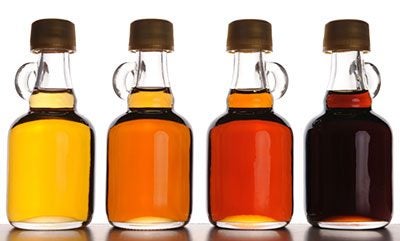Chamila Nimalaratne, Jane Blackburn, Rajasekaran R. Lada,
A comparative physicochemical analysis of maple (Acer saccharum Marsh.) syrup produced in North America with special emphasis on seasonal changes in Nova Scotia maple syrup composition, Journal of Food Composition and Analysis, Volume 92, 2020, 103573, ISSN 0889-1575, https://doi.org/10.1016/j.jfca.2020.103573
Abstract: Maple syrup is produced by concentrating the maple tree sap. The physicochemical profile of maple syrup can be varied depending on the processing method, microbial contamination, seasonal and geographical variations etc. Apart from being a better alternative to refined sugar, the minerals and phenolics in maple syrup may provide additional health benefits owing to their bioactivities. We studied the physicochemical profiles of maple syrup samples from North America and the seasonal compositional changes of the syrup from Nova Scotia (NS). Syrup pH, color, Brix were significantly differ depending on the location. Brix values ranged from 61.6 to 70.2°. Thirteen different phenolics including protocatechuic acid, coniferyl alcohol, vanillin, and syringic aldehyde were identified and quantified. The total mineral content ranged from 2.6 to 4.8 g/L of syrup. Potassium was the most abundant, followed by calcium, magnesium, phosphorus, manganese, and zinc. Analyses of NS syrup during early, mid and late seasons revealed that, total phenolics and minerals increased and the syrup color became darker towards late season. Syrup pH, brix and sugars did not differ among the seasons. Interestingly, vanillin, syringic acid and syringic aldehyde were the main phenolics in early maple syrup samples while protecatechuic acid was the predominant in late season.
https://www.sciencedirect.com/science/article/abs/pii/S0889157520302180

